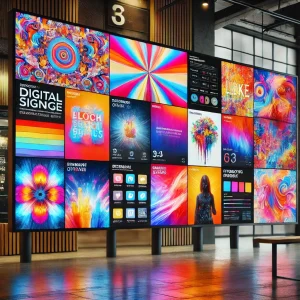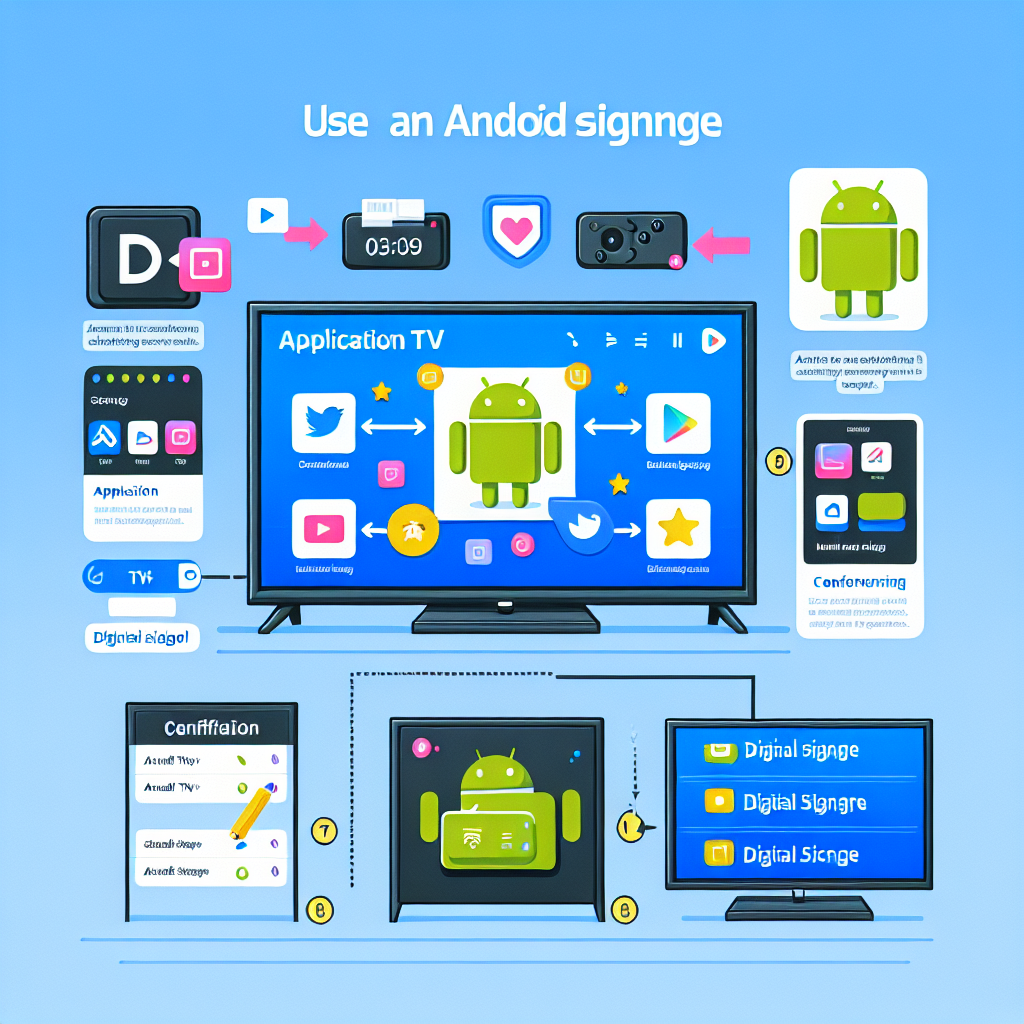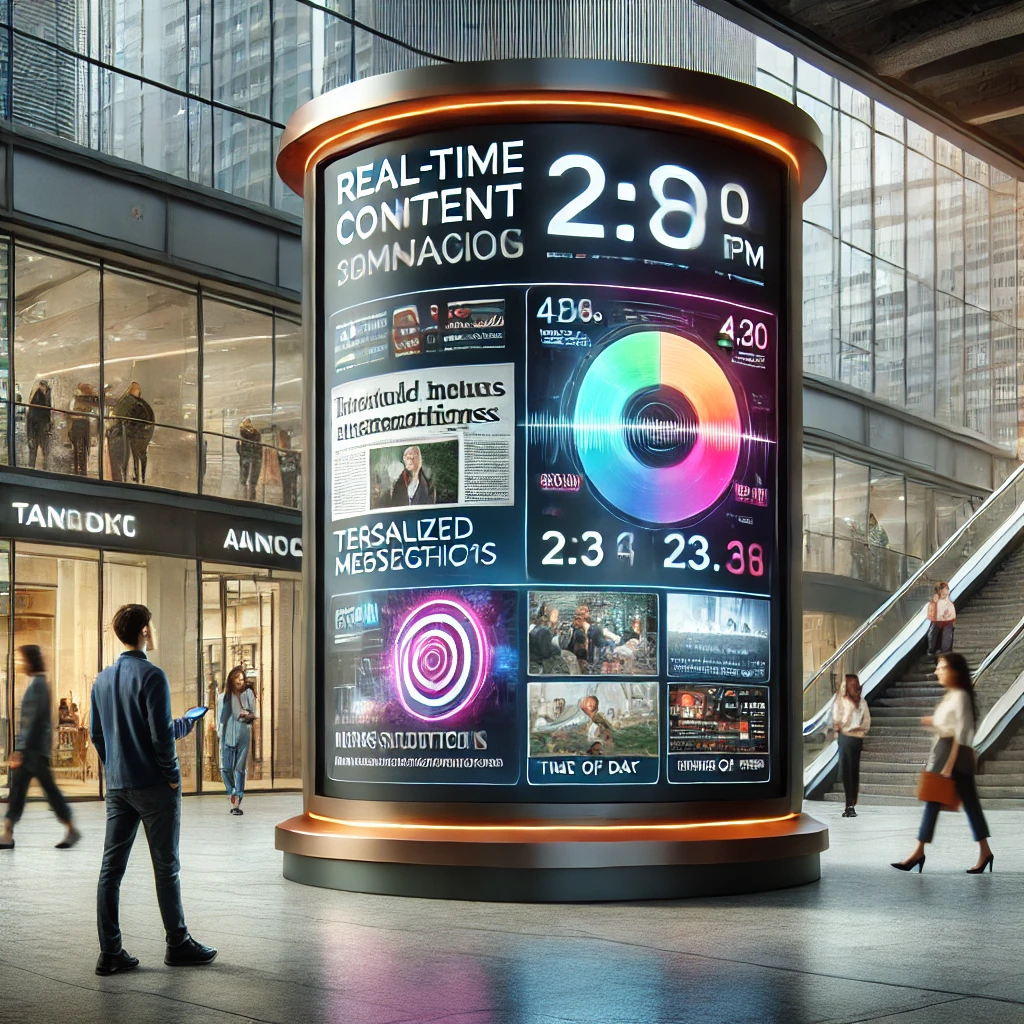Introduction: The Power of Visually Compelling Digital Signage Content
In a world where screens dominate, digital signage stands out as a dynamic way to capture attention, convey information, and influence behavior. Businesses, institutions, and public spaces leverage digital signage to communicate messages, enhance brand presence, and engage viewers dynamically. With the growing reliance on digital media, businesses seek innovative ways to connect with their target audience, and digital signage plays a key role in achieving this. When designed effectively, digital signage captivates viewers, increases brand awareness, and drives customer engagement.
Understanding the Audience: Tailoring Design for Maximum Impact
Audience preferences, behaviors, and expectations shape how they engage with digital signage. Younger viewers resonate with vibrant colors, bold typography, and fast-paced visuals that align with modern digital trends. Meanwhile, older audiences may prefer a refined aesthetic with clear typography, structured layouts, and well-balanced color schemes. Customizing design elements for different demographics ensures the message is absorbed effectively.
Beyond age, cultural background, location, and viewing context also influence content effectiveness. A retail store benefits from high-energy promotional visuals, whereas a corporate setting demands professionalism and clarity. Tech-savvy users may engage with interactive elements, while static but impactful messaging suits environments requiring quick information retrieval. Understanding these nuances allows designers to craft content that resonates and maximizes engagement.

What Makes High-Quality Digital Signage Content?
High-quality digital signage content is not just about aesthetics; it ensures messages are understood, appreciated, and acted upon. Several key elements contribute to this:
Clarity and Readability
Font Selection, Size, and Spacing: Font choices directly impact readability. Sans-serif fonts like Arial and Helvetica improve clarity across different screen sizes. Decorative fonts reduce legibility, especially at smaller sizes. Text size should suit the intended viewing distance, while proper line spacing enhances readability and prevents words from blending.
Contrast: High contrast between text and background ensures visibility in various lighting conditions. Dark text on a light background or vice versa enhances readability and reduces eye strain. Meeting accessibility contrast standards allows all viewers, including those with vision impairments, to engage with content effortlessly.
Relevance: Audience Targeting & Contextual Awareness
Effective content considers audience demographics, interests, and behaviors. Messaging in a school setting differs significantly from that in a corporate office. Content scheduling or sensor-based adaptations enhance relevance by adjusting messages based on time, location, or weather. This personalization ensures engagement, making content timely and impactful.
Engagement: Visual Dynamics & Interactive Elements
Motion graphics and video must serve a clear purpose, guiding attention rather than causing distractions. Subtle animations help emphasize call-to-action elements, highlight new offers, or indicate updates. Interactive touch screens, QR codes, or motion sensors further enhance engagement, allowing users to interact with content in meaningful ways. Well-planned dynamic visuals ensure immersive experiences without overwhelming viewers.
Brand Consistency: Visual Identity & Messaging
Consistency in colors, fonts, and messaging strengthens brand recognition and builds trust. A unified design approach ensures digital signage reflects the brand’s identity across different locations. The tone of messaging should align with the brand’s personality, whether playful, professional, or informative. Cohesive branding reinforces familiarity and boosts recall value.
Simplicity vs. Impact: Minimalist Design with Bold Elements
A minimalist design approach ensures content remains digestible and effective. Too much information can overwhelm viewers, diluting key messages. Focusing on one or two primary ideas per screen improves comprehension. Sparing use of bold colors, large text, or distinctive design elements ensures key points stand out while maintaining visual harmony.
Accessibility: Contrast, Color & Universal Design
Accessible design accommodates all viewers, including those with color vision deficiencies. High-contrast text and backgrounds improve readability across different lighting conditions. Universal design principles, such as integrating symbols or icons alongside text, enhance comprehension. Prioritizing accessibility broadens audience reach and improves user experience.
High-quality images and videos capture attention and retain viewer interest. Research by the Nielsen Norman Group suggests that users engage more with images that contain relevant information. Additionally, Cisco’s study projects that by 2022, video content will account for 82% of all internet traffic. Well-selected, high-quality visuals help businesses communicate messages effectively and leave a lasting impression.
Utilizing Animation and Motion Graphics: Adding Dynamic Elements
Motion naturally draws the eye, helping content stand out in high-traffic environments. Subtle animations, like countdown timers for promotions or smoothly transitioning elements, enhance engagement. Retail stores, restaurants, and event venues can use motion to create immersive brand experiences. However, excessive movement can lead to visual fatigue, making it essential to balance motion with clarity.
Animations should also guide viewers toward essential information. Subtle highlights, animated arrows, or pulsing indicators direct attention to calls-to-action. Timed transitions help break complex information into digestible segments, ensuring clarity without overwhelming the audience.
Storytelling: Creating Compelling Narratives in Digital Signage
A well-structured narrative keeps digital signage engaging and memorable. Even static content can tell a story, such as showcasing a product’s journey from concept to market. Emotional engagement—through humor, inspiration, or urgency—strengthens brand connections. Using relatable characters or real-life scenarios builds trust and sustains interest.
Sequential messaging enhances storytelling by unfolding content over multiple screens or timed intervals. Brands can use episodic content, customer testimonials, or behind-the-scenes insights to create anticipation. When done effectively, storytelling transforms signage from passive displays into immersive brand experiences.
Designing for Different Screen Sizes and Orientations: Ensuring Consistency
Digital signage appears on various screen sizes, from large video walls to tablets. Designing adaptable content ensures messages remain clear across different formats. Responsive design techniques allow seamless content adaptation, maintaining brand identity and optimizing the user experience across all screen orientations.
Implementing Effective Call-to-Actions: Encouraging Interaction
A well-designed call-to-action (CTA) drives engagement and conversion. Whether prompting a purchase, directing users to a website, or encouraging newsletter sign-ups, an effective CTA stands out visually. Contrasting colors, action-oriented language, and clear instructions enhance CTA effectiveness. Research by the Nielsen Norman Group indicates well-optimized CTAs can increase conversion rates by up to 200%
Testing and Optimizing: Fine-tuning the Design for Optimal Results
To maximize effectiveness, digital signage content should be continuously tested and optimized. A/B testing different design elements helps identify what resonates with viewers. Metrics such as engagement rates, click-through rates, and conversions provide insights for refinement. Iterative testing allows designers to enhance impact and continuously improve content effectiveness.
Q&A
Q: How often should I update my digital signage content?
A: Content should generally be updated daily or weekly for freshness. Special updates during events or sales ensure relevance.
Q: Can I use the same content across different locations?
A: While some content can be standardized, localizing content for different demographics or regions enhances engagement.
Q: What’s the most common mistake in digital signage content creation?
A: Overloading information. Simplicity and clarity are key to effective messaging.
Conclusion
Crafting visually compelling digital signage content is both an art and a strategic endeavor. t requires understanding audience preferences, applying strong design principles, and leveraging technology for dynamic engagement. Prioritizing clarity, accessibility, and interaction transforms signage from passive displays into powerful communication tools. In today’s digital-first world, signage serves as a brand’s first impression—making it crucial to design with impact.


